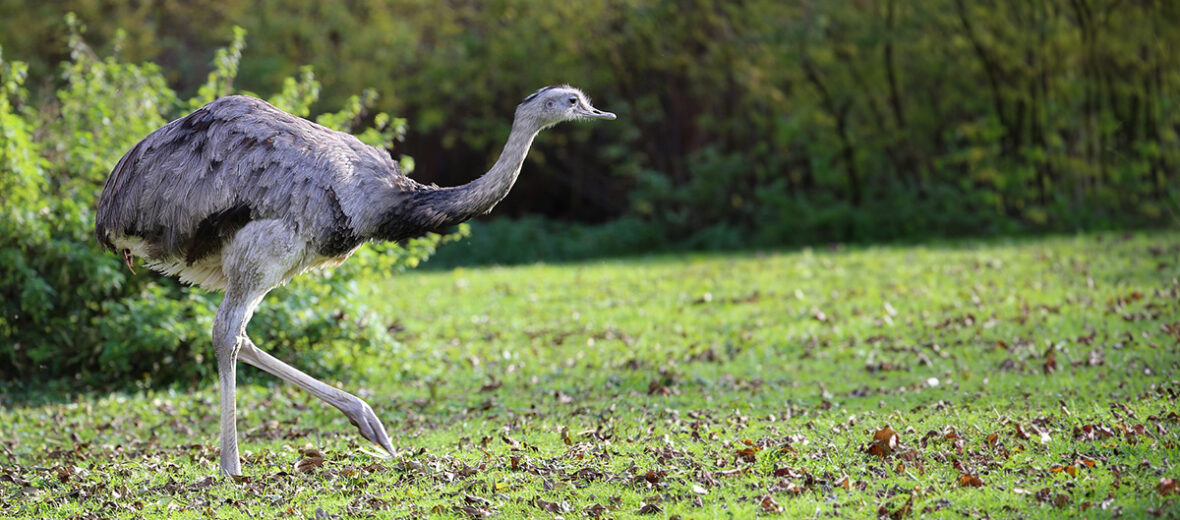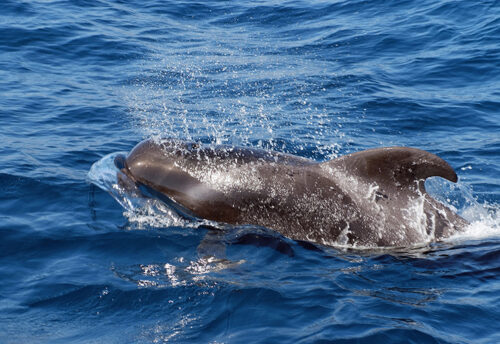
The greater rhea, aka American rhea, common rhea, Ema, grey rhea, or ñandú, is the largest flightless bird in the Americas. They can be found in Argentina, Bolivia, Brazil, Paraguay, and Uruguay. Also, there is a population in northern Germany. Unfortunately, they face the threats of habitat loss at the hands of farming and ranching; hunting; and trapping. Their populations are decreasing as well. The IUCN lists these large birds as Near Threatened.
First the Stats…
Scientific name: Rhea americana
Weight: Up to 60 lbs.
Length: Up to 55 inches
Height: Up to 5.7 feet
Wingspan: Up to 4.92 feet
Lifespan: Up to 40 years
Now on to the Facts!
1.) These birds have 3 forward-facing toes. They lack a rear toe.
2.) Leucistic (white plumage with blue eyes) and albino (white plumage with pink eyes) have been encountered on rare instances in the wild.
3.) They prefer chaparral, grasslands, savannas, wooded pampas, and regions with tall grass. When the breeding season arrives, they move to habitats close to water sources.
4.) Greater rheas are diurnal (active during the day).
5.) The greater rhea is generally a social bird that can dwell in flocks of up to 100 individuals.
But wait, there’s more on the greater rhea!
6.) That being said, males do tend to be aggressive towards other males.
7.) When fleeing, they will run in a zig zag pattern, using alternating raised wings as a kind of rudder to help them change directions.
Did you know…?
Greater rheas can reach running speeds of up to 40 mph!
8.) While typically silent, they are capable of producing a low booming sound. Chicks also produce a sad sounding whistle when requesting food.
9.) Broad-leaved vegetation, seeds, fruit, insects, scorpions, fish, smaller rodents, reptiles, and even small birds are all on the menu. They will also collectively group around carrion (dead animals) to feast on flies.
10.) Being coprophagous (eat feces “poop”), these birds will also consume the feces of other rheas.
But wait, there’s still more on the greater rhea!
11.) Rheas are polygynandrous (promiscuous – males and females mate with several partners).
12.) During the winter months, their flocks disperse into 3 primary flocks consisting of a male-only flock, a female-only flock, and a flock of yearlings (younger birds).
Did you know…?
The male will sometimes find a subordinate male to incubate the eggs while he goes off to find another female to breed with.
13.) When courting females, the male will call and raise the front of their body up tall while keeping their neck straight and then ruffle their plumage. They will often raise their wings and will run a decent distance in this fashion, often flapping their wings in a methodical pattern.
14.) As soon as the pair mate the female lays her up to 10 eggs in the nest the male prepares.
15.) The male will incubate the eggs while the female goes off to mate with yet another male.
But wait, there’s still a little more on the greater rhea!
16.) Nests are nothing more than a scrape in the dirt in a hidden location.
17.) Eggs hatch in up to 43 days and the do so within 36 hours of one another.
18.) At 6 months of age, the chicks are considered fully grown and become independent. However, the male will still offer protection until the chicks reach about 14 months of age.
19.) Farmers often kill greater rheas because they will sometimes feast on their broad-leaved crops.
20.) Cougars, jaguars, pampas cats, foxes, feral dogs, and large raptors all prey on juvenile and adult greater rheas. Whereas their eggs are subject to predation by hairy armadillos.
21.) When threatened, these birds tend to just flee. But when cornered, they can peck and more importantly use the sharp claws on their toes to kick at predators in an attempt to disembowel them.
Now a Short Greater Rhea Video!
This video is courtesy of my friend over at Avi Birds.
Be sure to share & comment below! Also, check out the Critter Science YouTube channel. Videos added regularly!
Want to suggest a critter for me to write about? Let me know here.
Some source material acquired from: Wikipedia & IUCN
Photo credit: Rufus46



